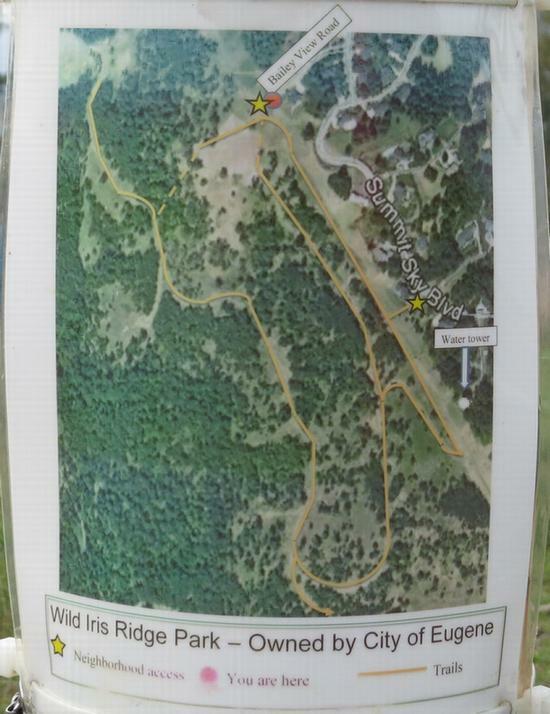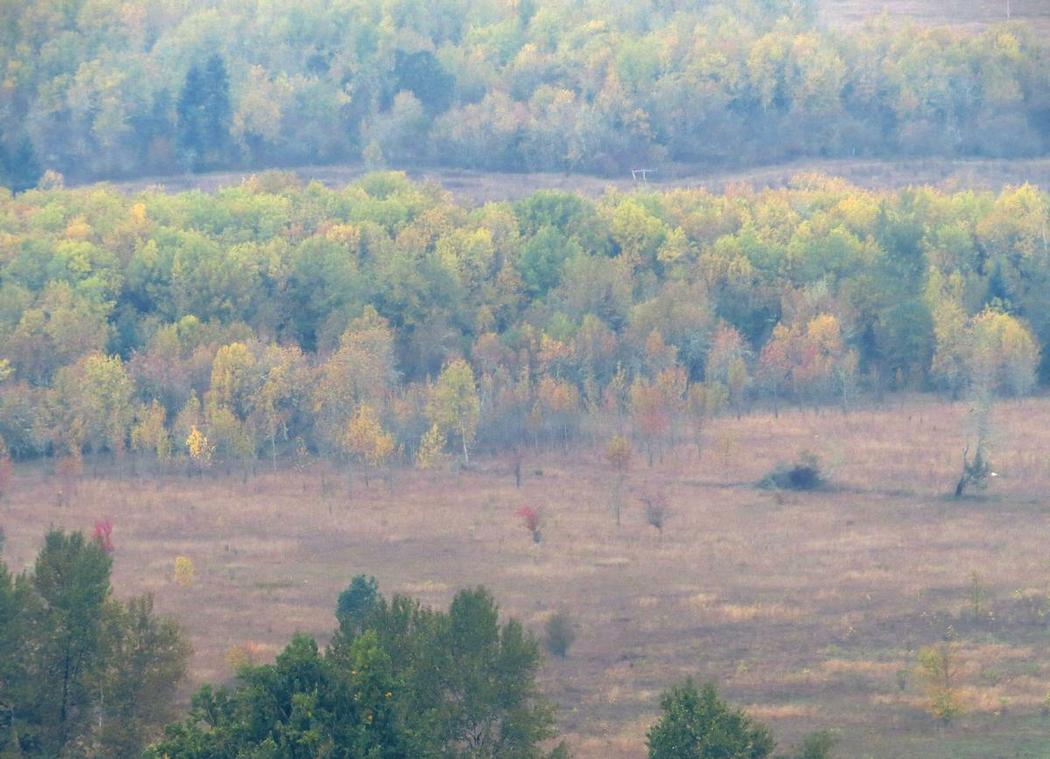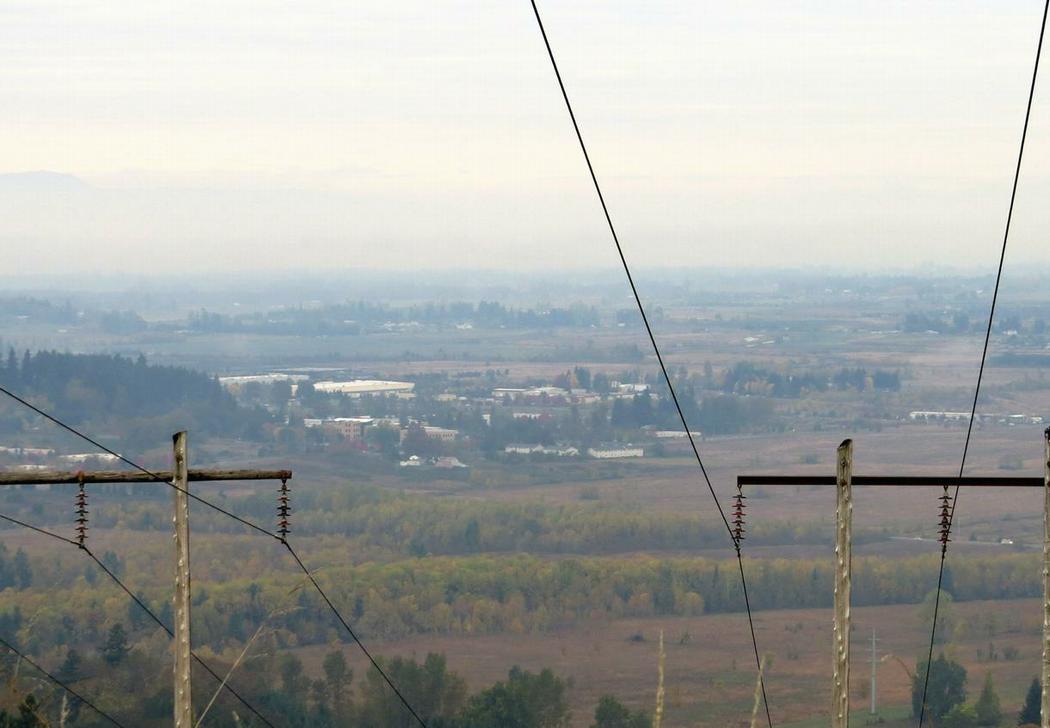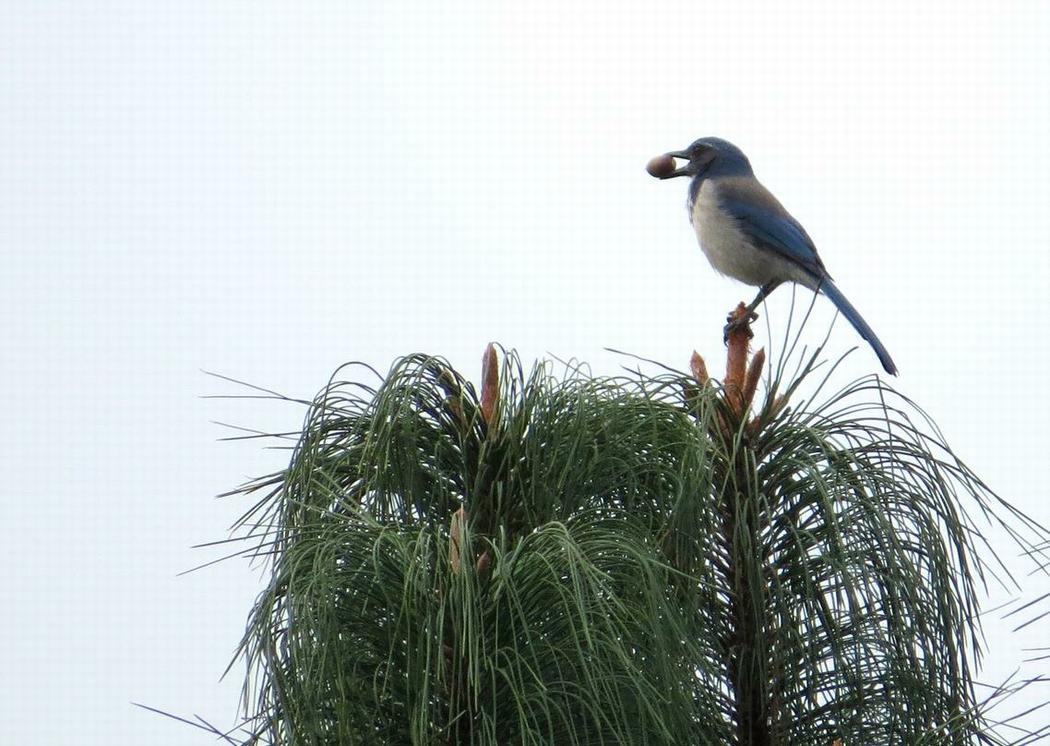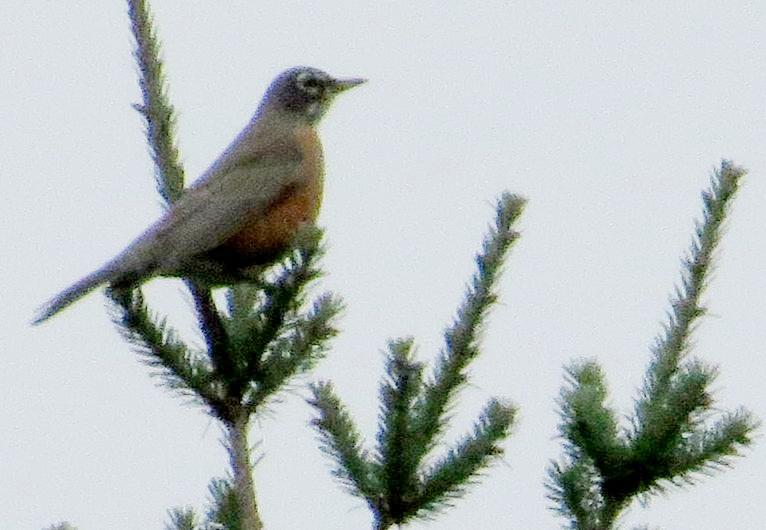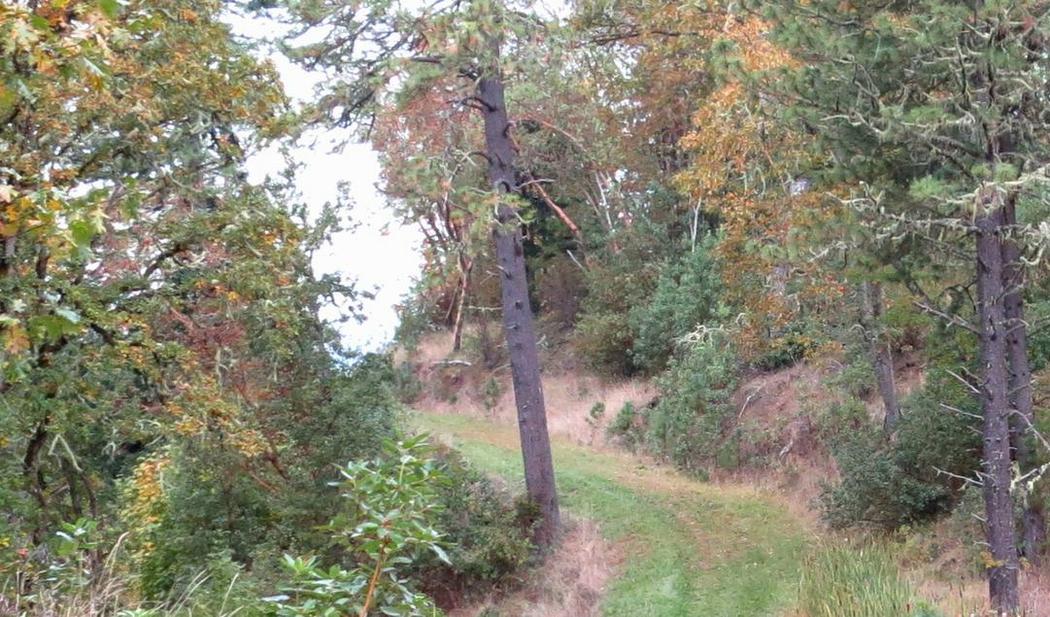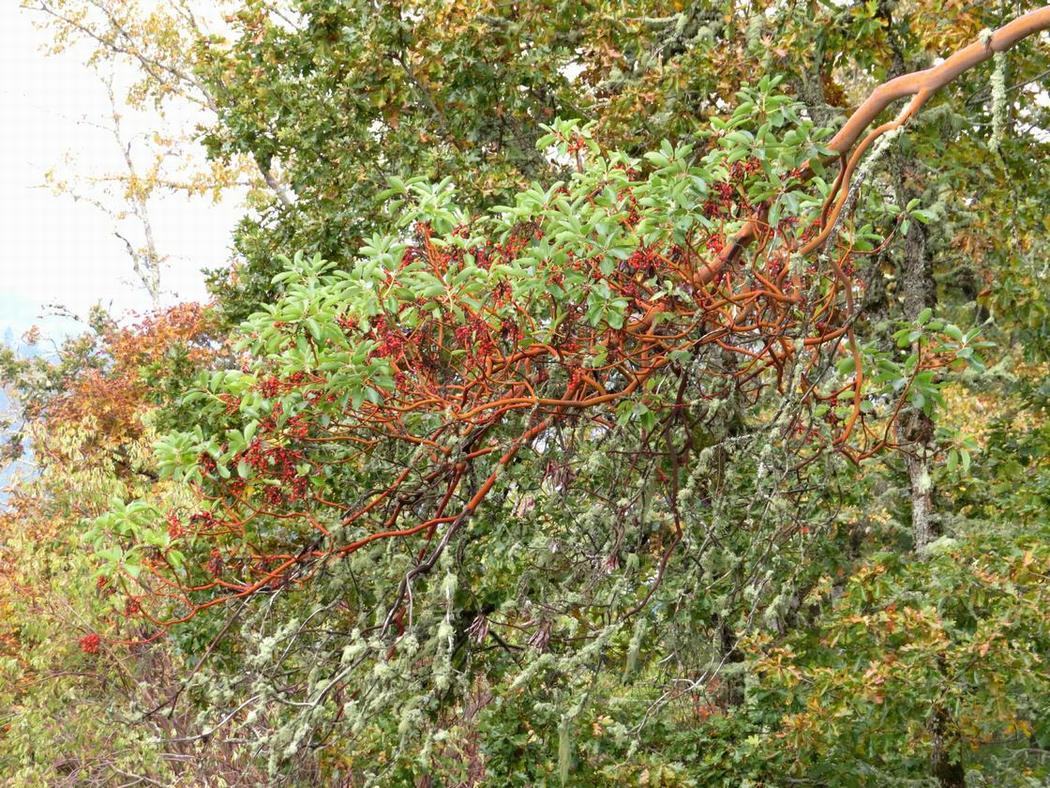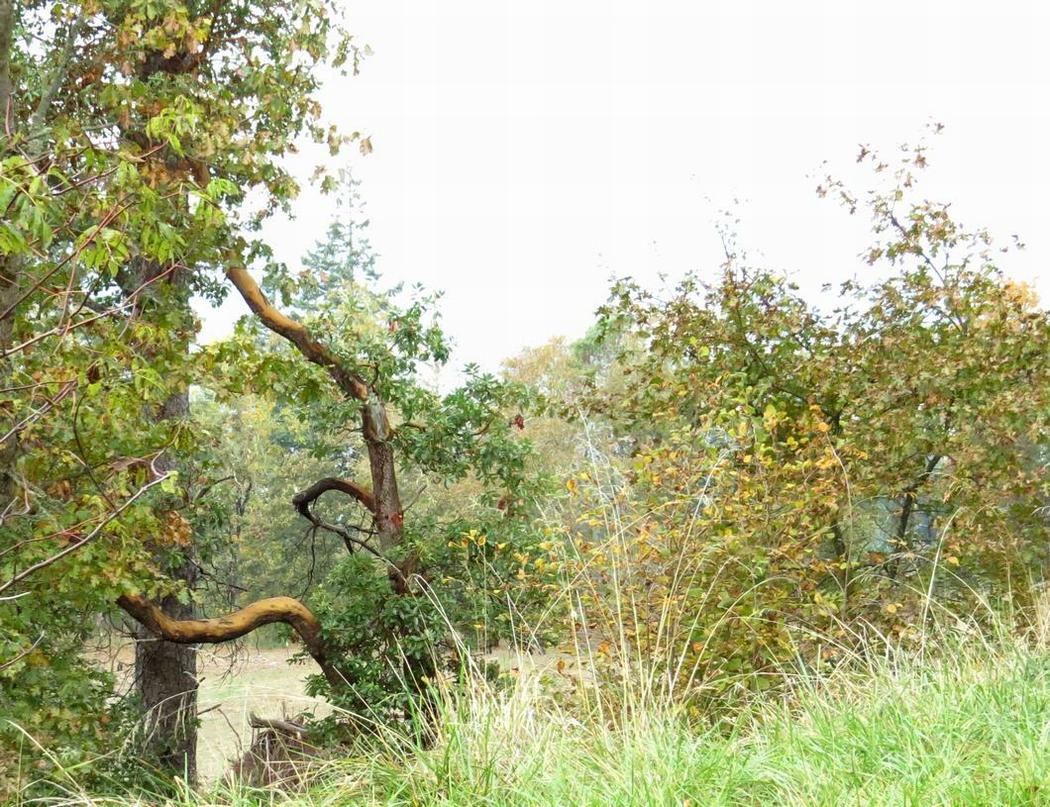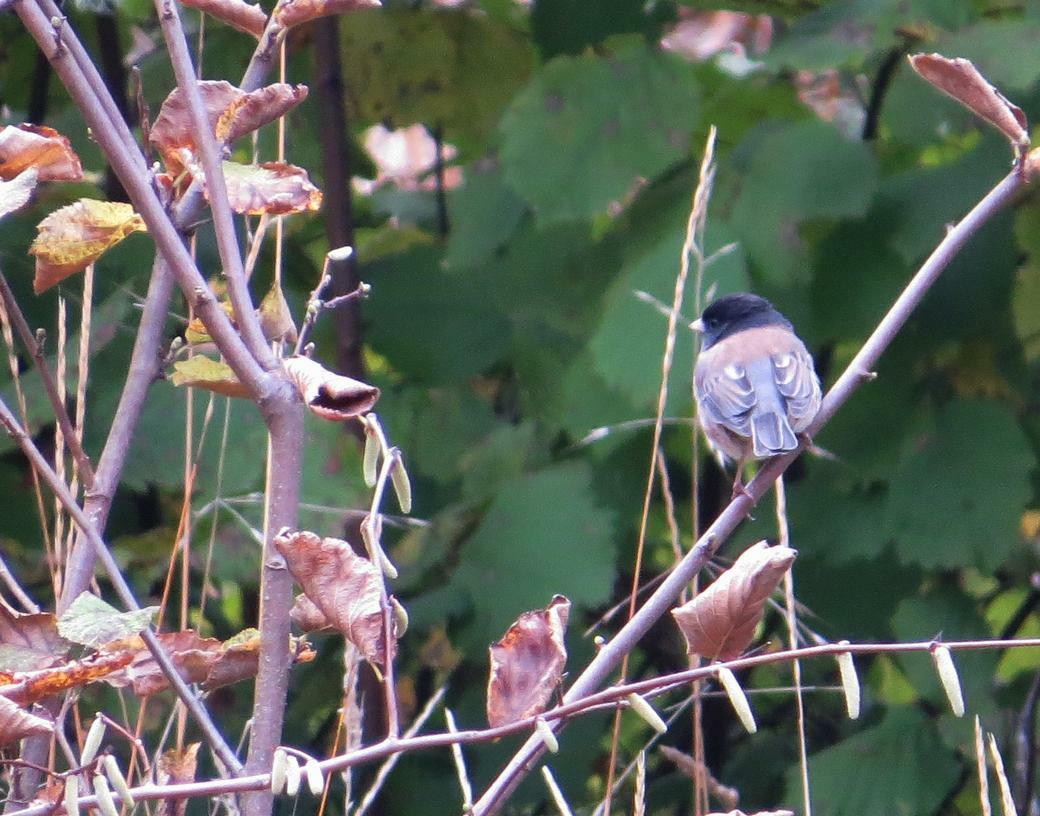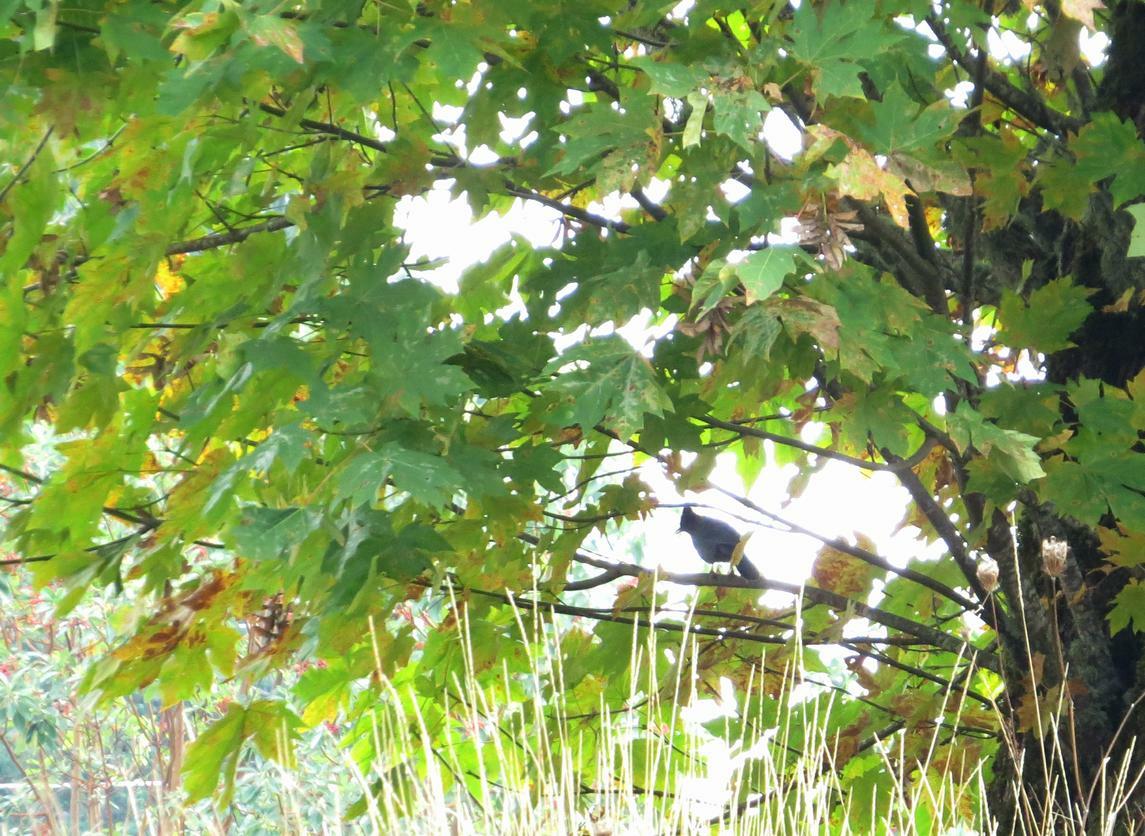This was a new place for our group, so it was an adventure.
We had a lovely Fall day, Summer having high-tailed it off to the South
abruptly a few weeks ago. There was a thin overcast cloud cover,
so the light was a bit flat, with no distinct shadows,
and not terribly bright but not dreary gray either,,
and there was no wind. Once again, we had a very large turn-out for this walk,
I'd guess somewhere around 20 people, give or take a few.
This place is out at the very Southwest edge of Eugene's "South hills" housing developments.
The trail begins at an elevation of about 900 feet, compared to downtown being about 470 feet above see level.
The signs which greeted helped us to realize this place was where the housing developments of Eugene come to an end, and wildlife habitat begins.


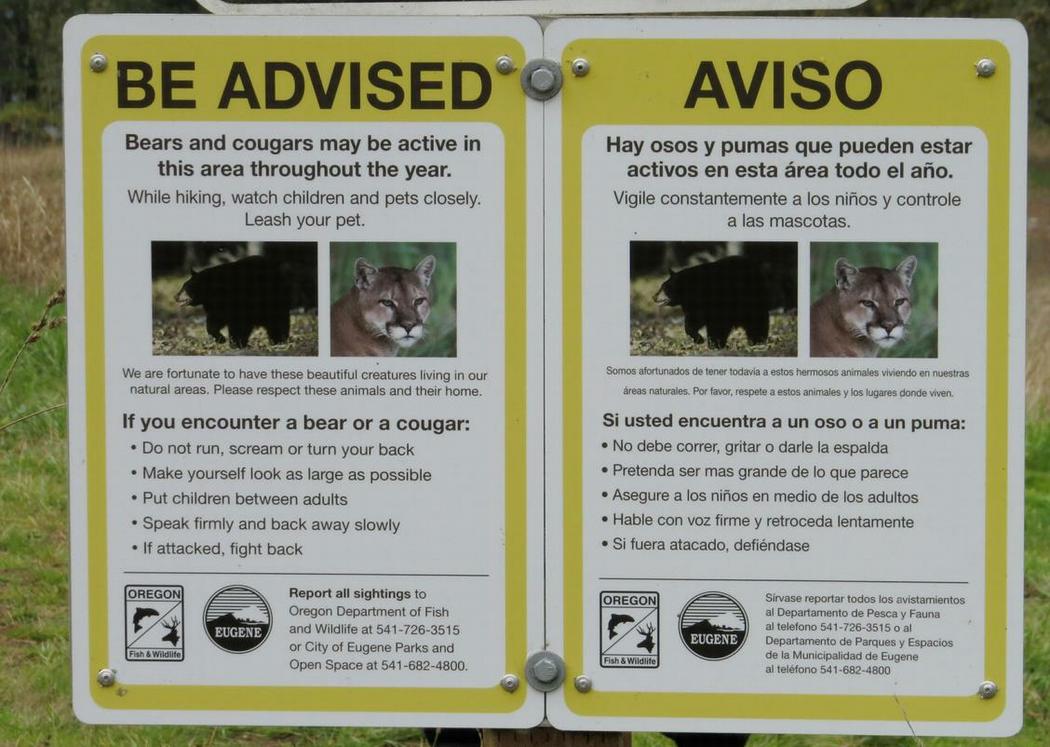

It's true enough. If you look at a satellite map you will see that this ridge continues into quite a large expanse of land which while not unsettled, I would say undeveloped.
There are scattered homes among the forested hills, but mostly single homes. Of course one comes to Lorane Hwy or Fox Hollow if one goes far enough south,
but there are a LOT of acres of land between wild iris ridge and even those roads.
This wildlife habitat doesn't just extend south, it also extends east and west once you get just south
of this last housing development next to the trails. In fact the city has dreams of connecting Wild Iris Ridge with the Ridgeline Trail system, which currently ends on Blanton Rd only a few miles east.
As soon as we got on the trail we were treated to views of the valley floor N.W. of us.
The view was nice enough to include in our photo album,
especially after enhancing the photos with increased contrast.
A Scrub Jay atop a nearby fir tree
holding an acorn in it's bill became my first ornithological
photographic subect.
As we started our walk, we immediately began hearing Robins,
and it turned out they were present in great numbers,
and we encountered them everywhere.
Amazingly, I didn't manage to get a good picture of a Robin,
only a blurry one, but I think it's safe to say
that everyone knows what Robins look like.
While I was attempting another shot at the Robin in the very top of a tree,
it turned into a Starling; at least that's what showed up in the camera
without my having noticed the birds switching place.
I did manage a pretty decent shot of a Northern Flicker


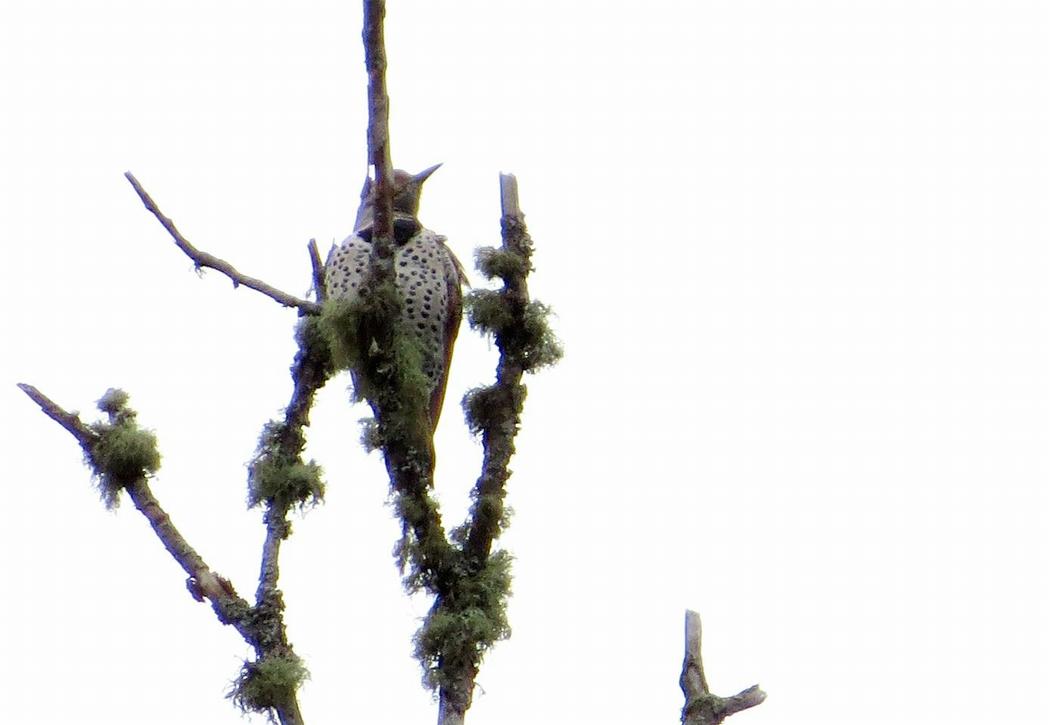


I really enjoyed walking the Wild Iris Ridge trail
both because it was a new place and also because it is an interesting habitat.
There are numerous very tall fir or pine trees
spread out over this expansive hillside.
Steve pointed out a small spring-fed boggy area
with cattails growing in it and I saw at least one more of those
along the way. These sources of water are very likely a treasure for the local birds, and these locations probably offer some of the best birding on Iris Ridge.
A pile of dirt evidently was placed to build up the trail in that area. For the most part,
the ground was covered with grasses and shrubs,
with plenty of old pieces of fallen timber.


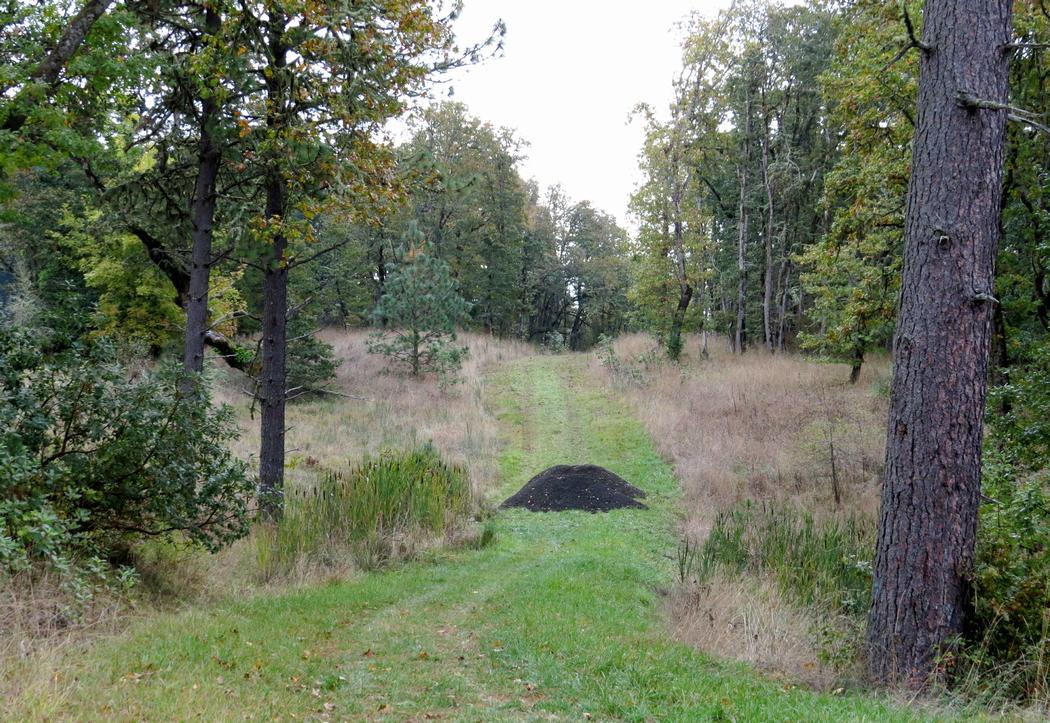


I mentioned to someone (Jo, I think),
that I had heard that Robins do not migrate great distances,
so that while our local Robins leave for the Winter,
flocks of Robins from further North come down here for the Winter.
I've noticed that there are some periods in late Fall where we seem to have almost no Robins.
Steve quipped that maybe all our Robins are at Wild Iris Ridge.
Then in late December or into January I think, we suddenly have very noisy flocks of Robins around town.
For a while later in Winter we seem to have few Robins again for a while
before Robins return and begin singing mating songs.
I looked into this a bit the other day and found some bird-banding data
which tends to support the idea that Robins in the West tend to shift Southward
some few (or none) degrees latitude, up to maybe 10 or so degrees South for the Winter.
A bird from our area was found in the San Jose area in California,
while a Northern Washington bird was found Wintering in Oregon.
Another perspective given on the Wild Birds Unlimited web site
said that some male Robins do not migrate but remain for the Winter.
The (human) idea being that they might be doing so to claim the best breeding territory in Spring.
I wonder if the Robins which remain here for the Winter spend their Winter together in flocks, or whether they might even flock
together with Robins wintering here from further North.
The trails at wild iris ridge log very much like re-conditioned old logging roads.
The entire trail system is a series of switchbacks around the sloped hillside of a small watershed
which drains into Willow Creek, West of Bailey Hill Road
and Willow Creek in turn flows into Amazon Creek.
As a result, we went down and then uphill one or two hundred feet
several times over the course of our walk;
trending to mostly downhill until we turned around.
Steve said the full trail is about 1.5 miles each way.
We probably walked only a mile or more each way.
At the downhill end there is a gate blocking vehicular access
but it may be possible to use two cars and park one down there,
if the road by that gate is a public road where it meets with Bailey Hill Road.
Madrone trees were common, and they were laden with berries.
On OBOL several folks have posted about Cedar Waxwings eating Madrone berries recently.
Did our bird list include Cedar Waxwings?
I think this place may be good for birding in April and May,
as warblers and songbirds migrate through and return to the valley.
It will be interesting to see which birds remain to breed in the area as well.
Perhaps there will be Lazuli Buntings for example, since they like open grasslands
with shrubs and stands of trees - such as the Oak Savannah at Mt Pisgah.
Many of the birds we saw tended to keep some distance from us,
so we worked at getting good clear views of Stellar's Jays and even Juncos at times.
The size of our group combined with the very open habitat,
may have spooked the birds. The birds in this area
might not be accustomed to seeing a lot of human traffic in this area either.
I had a lot of trouble getting pictures of birds which were flitting around a lot
in the smaller shrubs and trees. Auto-focus mechanisms are readily fooled by
any object such as a leaf or branch in the same field of view as the bird,
and in lower light the problem is more pronounced. I did get some Juncos almost in focus
All I could do with a constantly moving Stellar's Jay
was to get a more artistic shot in which the bird is framed nicely by leaves
while he is perched in an opening. The bird was too far away to get detail
and since it is a very dark blue and black bird, it's an extra challenge to
take a picture in which the bird is brightened up enough to see details.
That would also have required even longer exposure times
and that was difficult with the bird always being on the move.
There was a lot of birding action, though not a great variety of bird species
and none which got us especially excited.
Still, the group was in good spirits through the entire walk
and we got some very good exercise as well.
Bird list for BOGS walk, Oct. 10, 2013, at Wild Iris Ridge in Southwest Eugene. A cloudy, cool and dry morning.
-- compiled by Doris Wimber
- California quail (thanks to Janet for pointing this out in the neighborhood as we left the area.)
- Anna's hummingbird
- Northern flicker
- Steller's jay
- Scrub jay
- American crow
- Black-capped chickadee
- Bewick's wren
- American robin (many!)
- European starling
- Cedar waxwing (flock in the air)
- Spotted towhee
- Song sparrow
- Golden crowned sparrow
- Dark-eyed junco
The photo slide-show for this trip can be found here:
http://priscillanhk.com/bogs-wild-iris-ridge-10-10-13.html
Generally if you want to know what is happening next at BOGS, or want to see the latest photos/reports,
you can find these on my "updates" page:
http://priscillanhk.com/updates.html
Enjoy!
Priscilla





